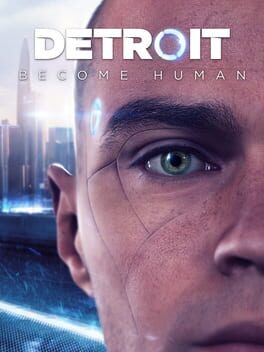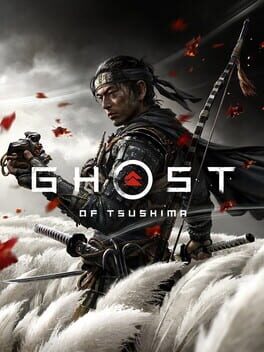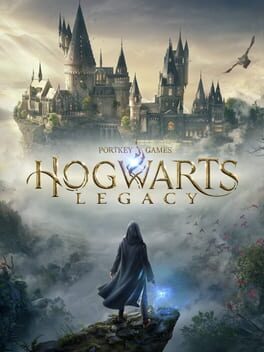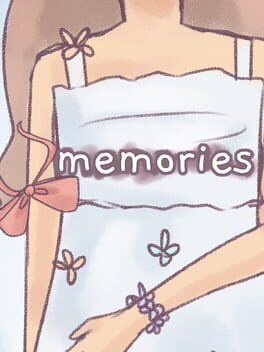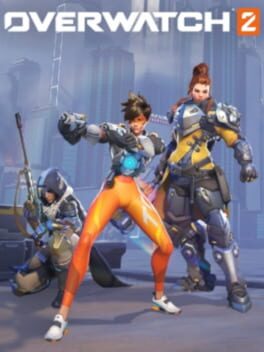wheatpenguin
2023
NO SPOILERS
I had a Korean history professor who used to say a phrase: “Take a look at any Korean dish and you’ll see quickly that Koreans love to mix things.” She would make a violent stirring motion with her hands as she said this, absurd and delightful. As I played Lies of P, a debut single player title out of a previously unknown studio in South Korea, I can’t help but remember this anecdote. The game fan-dubbed as Bloodborne Pinocchio has clearly been crafted by mixing many identifiable yet incongruous ingredients. Such a concoction can be quite dangerous if not approached with insight and honesty, the two qualities the inspirational materials respectively vow to teach. Despite the dangers, Lies of P is the gamic equivalent of an exquisite plate of bibimbap made by a chef who understands every ingredient down to a tee.
With the prevalence of “souls-likes,” we find ourselves at a bit of a Turing Test of whether a game feels like it could have been made by Hidetaka Miyazaki and the FromSoft team or not. Perhaps the greatest risk of mimicking a generational masterpiece is that even a decent element feels like it falls short by comparison. For example, Lies of P’s story is suitably engaging and I found myself charmed with the variety of characters, but I can’t say that it had me enraptured in the way Bloodborne’s Lovecraftian lore did. Many of the (typically Western) games fail the Turing Test due to approaching the design problem without honesty and humility. They see a game like Dark Souls or Bloodborne, and although they have identified the apparent quality, are already racing to think of ways to improve it before understanding it. Haphazardly washing the careful balance with ill-fitting Western design tendencies results in something akin to tempura served in a cheeseburger.
I was afraid Lies of P would resemble its’ protagonist – a puppet with a hollow center, desperate to impress paternal inspirations, who can’t help but fall into derivative dishonesty – but thankfully, Lies of P stands out and passes the test with flying colors. The game is quite linear in a macro sense, associating it most closely to Dark Souls 3, but the individual areas have a variety of branching paths and looping, vertical structures. Where it surpasses the standard, however, is with a stellar combat engine. Lies of P takes the deflection-driven combat of Sekiro and merges it with the bloodthirsty trades of Bloodborne, resulting in a child that miraculously exceeds both parents. Pinocchio can choose to block an incoming hit and retain half the damage as retrievable gray health, dodge the hit entirely, or time a risky perfect block that whittles down enemy posture. An enemy with fully depleted posture can be hit with a charged heavy attack to deal massive damage, the equivalent of visceral attacks in Bloodborne. This marriage of disparate game designs turns Lies of P into a furious dance where every single enemy move becomes an interesting choice. As I run from one Gothic-themed level to the next, the moment to moment game design demonstrates careful and precise balance. More than anything, it highlights the developers’ understanding of both their own game and the games they take inspiration from.
Although he would be rushed out after 30 seconds by Geoff Keighley, I imagine that if Lies of P director Choi Ji Won was given an opportunity to accept an award, it would look very similar to Bong Joon Ho’s acceptance for Parasite in 2020. A beautiful expression of humility and gratitude to the masters of the medium. Indeed, the humility of the project is the greatest strength. Lies of P does not look to fix FromSoft, but to understand and refine their formula. This is a trait I deeply respect from these Korean developers and wonder if my American peers could ever look past their own hubris to replicate.
I can’t lie: in some part, I am biased for this cutesy-grimdark aesthetic. I wait with bated breath for their upcoming Alice in Wonderland-themed project.
I had a Korean history professor who used to say a phrase: “Take a look at any Korean dish and you’ll see quickly that Koreans love to mix things.” She would make a violent stirring motion with her hands as she said this, absurd and delightful. As I played Lies of P, a debut single player title out of a previously unknown studio in South Korea, I can’t help but remember this anecdote. The game fan-dubbed as Bloodborne Pinocchio has clearly been crafted by mixing many identifiable yet incongruous ingredients. Such a concoction can be quite dangerous if not approached with insight and honesty, the two qualities the inspirational materials respectively vow to teach. Despite the dangers, Lies of P is the gamic equivalent of an exquisite plate of bibimbap made by a chef who understands every ingredient down to a tee.
With the prevalence of “souls-likes,” we find ourselves at a bit of a Turing Test of whether a game feels like it could have been made by Hidetaka Miyazaki and the FromSoft team or not. Perhaps the greatest risk of mimicking a generational masterpiece is that even a decent element feels like it falls short by comparison. For example, Lies of P’s story is suitably engaging and I found myself charmed with the variety of characters, but I can’t say that it had me enraptured in the way Bloodborne’s Lovecraftian lore did. Many of the (typically Western) games fail the Turing Test due to approaching the design problem without honesty and humility. They see a game like Dark Souls or Bloodborne, and although they have identified the apparent quality, are already racing to think of ways to improve it before understanding it. Haphazardly washing the careful balance with ill-fitting Western design tendencies results in something akin to tempura served in a cheeseburger.
I was afraid Lies of P would resemble its’ protagonist – a puppet with a hollow center, desperate to impress paternal inspirations, who can’t help but fall into derivative dishonesty – but thankfully, Lies of P stands out and passes the test with flying colors. The game is quite linear in a macro sense, associating it most closely to Dark Souls 3, but the individual areas have a variety of branching paths and looping, vertical structures. Where it surpasses the standard, however, is with a stellar combat engine. Lies of P takes the deflection-driven combat of Sekiro and merges it with the bloodthirsty trades of Bloodborne, resulting in a child that miraculously exceeds both parents. Pinocchio can choose to block an incoming hit and retain half the damage as retrievable gray health, dodge the hit entirely, or time a risky perfect block that whittles down enemy posture. An enemy with fully depleted posture can be hit with a charged heavy attack to deal massive damage, the equivalent of visceral attacks in Bloodborne. This marriage of disparate game designs turns Lies of P into a furious dance where every single enemy move becomes an interesting choice. As I run from one Gothic-themed level to the next, the moment to moment game design demonstrates careful and precise balance. More than anything, it highlights the developers’ understanding of both their own game and the games they take inspiration from.
Although he would be rushed out after 30 seconds by Geoff Keighley, I imagine that if Lies of P director Choi Ji Won was given an opportunity to accept an award, it would look very similar to Bong Joon Ho’s acceptance for Parasite in 2020. A beautiful expression of humility and gratitude to the masters of the medium. Indeed, the humility of the project is the greatest strength. Lies of P does not look to fix FromSoft, but to understand and refine their formula. This is a trait I deeply respect from these Korean developers and wonder if my American peers could ever look past their own hubris to replicate.
I can’t lie: in some part, I am biased for this cutesy-grimdark aesthetic. I wait with bated breath for their upcoming Alice in Wonderland-themed project.
2023
No Spoilers
I really really wanted to love Alan Wake II, but ironically, I feel a little bit like Alan himself seeing the wave of critical praise this game has garnered. I just can't seem to see the beautiful, magnificent meta-textual masterpiece that everyone else is enamored with, and am left in the dark... place.
In concept, this is a game made exactly for my taste, but many of the executions fall unfortunately short of the promise showed by the premise. Every cool idea was only explored in the shallowest way, and the meta-textual element got more annoying as it went along. I'm a coffee-drinking, Pacific-Northwest-living, horror-media consuming freak, and even I could see right through the paper-thin facades.
The game's visuals are absolutely arresting and the mix of live action and CG graphics are interesting enough to almost be worth the price of admission. The survival gameplay is alright and inoffensive, although nowhere close to the standard set by Resident Evil 4 earlier this year. The star of the show is clearly the narrative but I never felt truly captivated by any character or theme. I can easily tell the story wants to be about art and death and the nature of storytelling itself; perhaps a million other things could also fall under Alan Wake II's thematic banner. I'm not allergic to this kind of thing either, and am an avid fan of all the Lynch and Film Noir inspirations that Remedy so gleefully remind you they take cues from. Alan Wake II forgets that the cool trippy metatextual stuff only works when built over a base of truthful and emotional storytelling. By the time they smashed the fourth wall and the author was well beyond dead, I didn't have any interest in solving the crime of who killed him.
Sad! One of my most anticipated of 2023. I hope others enjoyed it more than I did, and it seems that they have. Despite my criticisms, the one thing you can't say about Alan Wake II is that it's phoned in, and I appreciate that. Remedy set out to make the game that they wanted to make, and although it failed for me, I'm happy that they did.
I really really wanted to love Alan Wake II, but ironically, I feel a little bit like Alan himself seeing the wave of critical praise this game has garnered. I just can't seem to see the beautiful, magnificent meta-textual masterpiece that everyone else is enamored with, and am left in the dark... place.
In concept, this is a game made exactly for my taste, but many of the executions fall unfortunately short of the promise showed by the premise. Every cool idea was only explored in the shallowest way, and the meta-textual element got more annoying as it went along. I'm a coffee-drinking, Pacific-Northwest-living, horror-media consuming freak, and even I could see right through the paper-thin facades.
The game's visuals are absolutely arresting and the mix of live action and CG graphics are interesting enough to almost be worth the price of admission. The survival gameplay is alright and inoffensive, although nowhere close to the standard set by Resident Evil 4 earlier this year. The star of the show is clearly the narrative but I never felt truly captivated by any character or theme. I can easily tell the story wants to be about art and death and the nature of storytelling itself; perhaps a million other things could also fall under Alan Wake II's thematic banner. I'm not allergic to this kind of thing either, and am an avid fan of all the Lynch and Film Noir inspirations that Remedy so gleefully remind you they take cues from. Alan Wake II forgets that the cool trippy metatextual stuff only works when built over a base of truthful and emotional storytelling. By the time they smashed the fourth wall and the author was well beyond dead, I didn't have any interest in solving the crime of who killed him.
Sad! One of my most anticipated of 2023. I hope others enjoyed it more than I did, and it seems that they have. Despite my criticisms, the one thing you can't say about Alan Wake II is that it's phoned in, and I appreciate that. Remedy set out to make the game that they wanted to make, and although it failed for me, I'm happy that they did.
2023
Considered as a companion-piece to the 2005 original rather than a flat out replacement, I appreciate the chaotic approach to reinterpreting 4's groundbreaking combat sandbox. New knife is absolutely peak game design. Although I understand the complaints about headshot randomization making the game feel inconsistent, it adds enough interest to even out Leon's new mobility options. I don't know if it can hold a candle to the sheer ingenuity of the original (impossible bar) but Remake has many commendable ideas wholly of it's own. If the stated goal of RE4R is to adapt the original into a more mechanically-able Leon with a highly chaotic battlefield to contend with, I'd say they passed with higher than flying colors.
2005
2020
2017
Tears of the Kingdom marks a bold new iteration in this new age of Zelda projects that hearken back to the series roots. Many call this a flat upgrade to Breath of the Wild, and it's not difficult to see where that sentiment arrives from. Many features of the prequel have been reworked to impressive effect. The careful damage rebalancing keeps the game stable and challenging, especially when compared to Breath of the Wild. Perhaps the most notable upgrade are the four new spells -- Ascend, Fuse, Ultrahand and Rewind -- which propel the play-space to astronomical proportions. Regardless of these, I feel that Tears of the Kingdom strives for a notably different goal than Breath of the Wild, and is more successful at achieving it.
Breath of the Wild is a soulful, quiet game, asking the player to meditate on their journey with mechanics grounded in realism. The simulative aspect feels more attuned to immersion than playfulness, especially since it's rather difficult to get any of the wonky physics glitches of the Twitter-virality sort without a perfect understanding of the game rules and engine. Make a fire to stay alive in the cold. Equip rubber armor so a thundershock isn't lethal. These are the thought processes travelling through a Breath of the Wild player's mind.
Conversely, Tears of the Kingdom's mechanical layers opens up the world of Hyrule and recontextualizes it into a playful sandbox. You're not as concerned about surviving the night as you are what the next Geneva-convention-breaking gadget you'll use to terrorize local flora and fauna with. The lack of major changes to Hyrule has me floored with how this identical game world excels so well at supporting two different mechanical systems.
Tears of the Kingdom then double-dips back into the immersive quality of the prequel with the Sky Islands and the Depths, the two new world zones that exist above and below Hyrule's ground floor respectively. The Sky Islands put the players new toolset to the test with challenging vertical puzzles, while the Depths' deep dark blackness evokes the survivalist elements of Breath of the Wild.
Ultimately what pulls the whole package together is the epic journey that a newer, fresher, and bolder Link sets out on. The arrival of King Ganondorf feels appropriately daunting for a Link that has braved a whole Hyrule's worth of content before. Where Breath of the Wild feels like an underdog story, Tears of the Kingdom is a Greek epic; we stand off against horrors beyond human comprehension as a hero armed to the teeth with borderline cheat-code abilities.
There are still many flaws of the game, of course. The strongest one that comes to mind is the story, which meanders and makes meaningless narrative gestures until just before the end. The conclusion, however, is so satisfying and bombastic that it almost makes me want to retroactively forgive the rest of the game. Although it definitely left on a positive note, I would hope to see this as the element that is most developed in the future iterations of this kind of Zelda, especially since Breath of the Wild didn't have a particularly great story either compared to the previous entries in the series.
Breath of the Wild felt like one of those impossible games that despite a AAA scope and multiple hundreds of developers, managed to achieve a design elegance and artistic focus we only really see on smaller projects. Tears of the Kingdom aims even higher for a grander tale and managed to surpass it's predecessor. Despite a number of flaws I could probably count on my fingers and never reach my toes, this game is a tour-de-force of our medium and a new benchmark for AAA open-world games.
Breath of the Wild is a soulful, quiet game, asking the player to meditate on their journey with mechanics grounded in realism. The simulative aspect feels more attuned to immersion than playfulness, especially since it's rather difficult to get any of the wonky physics glitches of the Twitter-virality sort without a perfect understanding of the game rules and engine. Make a fire to stay alive in the cold. Equip rubber armor so a thundershock isn't lethal. These are the thought processes travelling through a Breath of the Wild player's mind.
Conversely, Tears of the Kingdom's mechanical layers opens up the world of Hyrule and recontextualizes it into a playful sandbox. You're not as concerned about surviving the night as you are what the next Geneva-convention-breaking gadget you'll use to terrorize local flora and fauna with. The lack of major changes to Hyrule has me floored with how this identical game world excels so well at supporting two different mechanical systems.
Tears of the Kingdom then double-dips back into the immersive quality of the prequel with the Sky Islands and the Depths, the two new world zones that exist above and below Hyrule's ground floor respectively. The Sky Islands put the players new toolset to the test with challenging vertical puzzles, while the Depths' deep dark blackness evokes the survivalist elements of Breath of the Wild.
Ultimately what pulls the whole package together is the epic journey that a newer, fresher, and bolder Link sets out on. The arrival of King Ganondorf feels appropriately daunting for a Link that has braved a whole Hyrule's worth of content before. Where Breath of the Wild feels like an underdog story, Tears of the Kingdom is a Greek epic; we stand off against horrors beyond human comprehension as a hero armed to the teeth with borderline cheat-code abilities.
There are still many flaws of the game, of course. The strongest one that comes to mind is the story, which meanders and makes meaningless narrative gestures until just before the end. The conclusion, however, is so satisfying and bombastic that it almost makes me want to retroactively forgive the rest of the game. Although it definitely left on a positive note, I would hope to see this as the element that is most developed in the future iterations of this kind of Zelda, especially since Breath of the Wild didn't have a particularly great story either compared to the previous entries in the series.
Breath of the Wild felt like one of those impossible games that despite a AAA scope and multiple hundreds of developers, managed to achieve a design elegance and artistic focus we only really see on smaller projects. Tears of the Kingdom aims even higher for a grander tale and managed to surpass it's predecessor. Despite a number of flaws I could probably count on my fingers and never reach my toes, this game is a tour-de-force of our medium and a new benchmark for AAA open-world games.
2023
NO SPOILERS
Final Fantasy XVI challenges me as to whether I should judge a game by what it gets right, or what it gets wrong. The peaks are jaw-dropping moments of pure spectacle and grounded character-driven storytelling, while the valleys sacrifice everything the game excels at for middling fetch quests and undercooked lore. It comes as no surprise that this project was an all-hands-on-deck affair at Square Enix, rallying efforts from in-house teams such as the Final Fantasy and Kingdom Hearts teams, as well as partnered studio Platinum Games. If anything is evident about this game, it's the sheer volume of cooks in the kitchen. So how's the dish?
The game easily justifies the price of admission with glorious Eikon battles, where Clive faces off against iconic Summons in kaiju-sized conflicts. Every single Eikon battle feels revolutionary, constantly outclassing the one that came before it. These gameplay sections mix and match QTE's with standard gameplay controls to achieve an exhilarating performance. Some have levied the criticism that the Eikon battles are 'too easy.' I am a staunch defender of video game difficulty, but these moments are not meant to be overtly challenging, and that would take the player's focus off of the presentation. If anyone can play the Bahamut boss fight and tell you they didn't taste the tragedy in the culmination of visuals, music, narrative context, and boss design just because it didn't ask them to perfect dodge enough, they might not like games very much.
The DMC-inspired core gameplay loop sparks fleeting moments of joy but offers very little motivation to engage with it in a meaningful way. If there's one thing they nailed, it's game feel; Clive's moveset is full of perfected Japanese-style game juice, and the cinematic slow-downs upon perfect dodges and parries never get old. Despite this, the repetitive enemy designs fail to pull you out of the standard loop of dodging and dumping cooldowns. For how much Final Fantasy purists complain about the action gameplay, this one feels strikingly turn-based. I had a lot of fun completing the optional challenge Chronolith trials post-game, which taught me to use abilities I wouldn't have dared touch otherwise. I couldn't help but wish that the rest of the game had this style of implicit tutorialization. You could argue that the game is meant to be replayed with a stronger understanding of the underlying mechanics, but that kind of NewGame+ loop works for a nimble 15-hour DMC campaign and not a 40-hour epic.
Clive effortlessly charms as the protagonist, and his grief-laden traumatic backstory is handled with as much care as you could ask for, even if other aspects of the narrative falter. All of his key moments, especially regarding his younger brother Joshua, land as ferociously yet sensitively as a Chocobo fluttering upon your heartstrings. With a younger brother myself, I may be biased toward the narrative, but I can't imagine most players won't feel at least a little teary-eyed at Clive and Joshua's tale, especially the incredible opening hours. However, the game struggles to make surrounding characters hold their emotional weight, particularly the supporting cast of Jill, Cid and Dion. These characters have moments of greatness that reveal what a tighter story could have accomplished, but the scope of a "Kill God"-style main plotline muddies this potential. With clear-as-night inspiration from dark fantasy epics like Game of Thrones or Miura's BERSERK series, it might have done the writers well to focus the story on the character drama before plunging headfirst into doomsday scenarios.
Other than a handful, which really should have been the only ones, the side-quests are completely skippable. The vast majority are single-note and feel effortless, which makes the occasional diamond in the rough feel that much more conspicuous. I was lucky enough to have a friend tell me his favorites, which I would recommend to any player going in blind.
I hope I have painted you a picture of XVI as a game that excels at more things than most games could ever hope for, but happens to add more content anyway. I believe this is in part due to the "size matters" insecurity that plagued most of the last gen, with ballooning game sizes and lengths to compensate. However, in an age where gamers are happy to shell out 60$ for impactful 10-hour experiences, I see no reason that XVI couldn't have cut the fluff to become a perfect 25-hour game rather than a mostly good 40-hour game. It would help the replayability too.
Overall, I do recommend this game, especially to Final Fantasy fans who will enjoy the numerous hidden fan-service details. As I said in the second paragraph, experiencing the Eikon battles single-handedly justifies the price.
Final Fantasy XVI challenges me as to whether I should judge a game by what it gets right, or what it gets wrong. The peaks are jaw-dropping moments of pure spectacle and grounded character-driven storytelling, while the valleys sacrifice everything the game excels at for middling fetch quests and undercooked lore. It comes as no surprise that this project was an all-hands-on-deck affair at Square Enix, rallying efforts from in-house teams such as the Final Fantasy and Kingdom Hearts teams, as well as partnered studio Platinum Games. If anything is evident about this game, it's the sheer volume of cooks in the kitchen. So how's the dish?
The game easily justifies the price of admission with glorious Eikon battles, where Clive faces off against iconic Summons in kaiju-sized conflicts. Every single Eikon battle feels revolutionary, constantly outclassing the one that came before it. These gameplay sections mix and match QTE's with standard gameplay controls to achieve an exhilarating performance. Some have levied the criticism that the Eikon battles are 'too easy.' I am a staunch defender of video game difficulty, but these moments are not meant to be overtly challenging, and that would take the player's focus off of the presentation. If anyone can play the Bahamut boss fight and tell you they didn't taste the tragedy in the culmination of visuals, music, narrative context, and boss design just because it didn't ask them to perfect dodge enough, they might not like games very much.
The DMC-inspired core gameplay loop sparks fleeting moments of joy but offers very little motivation to engage with it in a meaningful way. If there's one thing they nailed, it's game feel; Clive's moveset is full of perfected Japanese-style game juice, and the cinematic slow-downs upon perfect dodges and parries never get old. Despite this, the repetitive enemy designs fail to pull you out of the standard loop of dodging and dumping cooldowns. For how much Final Fantasy purists complain about the action gameplay, this one feels strikingly turn-based. I had a lot of fun completing the optional challenge Chronolith trials post-game, which taught me to use abilities I wouldn't have dared touch otherwise. I couldn't help but wish that the rest of the game had this style of implicit tutorialization. You could argue that the game is meant to be replayed with a stronger understanding of the underlying mechanics, but that kind of NewGame+ loop works for a nimble 15-hour DMC campaign and not a 40-hour epic.
Clive effortlessly charms as the protagonist, and his grief-laden traumatic backstory is handled with as much care as you could ask for, even if other aspects of the narrative falter. All of his key moments, especially regarding his younger brother Joshua, land as ferociously yet sensitively as a Chocobo fluttering upon your heartstrings. With a younger brother myself, I may be biased toward the narrative, but I can't imagine most players won't feel at least a little teary-eyed at Clive and Joshua's tale, especially the incredible opening hours. However, the game struggles to make surrounding characters hold their emotional weight, particularly the supporting cast of Jill, Cid and Dion. These characters have moments of greatness that reveal what a tighter story could have accomplished, but the scope of a "Kill God"-style main plotline muddies this potential. With clear-as-night inspiration from dark fantasy epics like Game of Thrones or Miura's BERSERK series, it might have done the writers well to focus the story on the character drama before plunging headfirst into doomsday scenarios.
Other than a handful, which really should have been the only ones, the side-quests are completely skippable. The vast majority are single-note and feel effortless, which makes the occasional diamond in the rough feel that much more conspicuous. I was lucky enough to have a friend tell me his favorites, which I would recommend to any player going in blind.
I hope I have painted you a picture of XVI as a game that excels at more things than most games could ever hope for, but happens to add more content anyway. I believe this is in part due to the "size matters" insecurity that plagued most of the last gen, with ballooning game sizes and lengths to compensate. However, in an age where gamers are happy to shell out 60$ for impactful 10-hour experiences, I see no reason that XVI couldn't have cut the fluff to become a perfect 25-hour game rather than a mostly good 40-hour game. It would help the replayability too.
Overall, I do recommend this game, especially to Final Fantasy fans who will enjoy the numerous hidden fan-service details. As I said in the second paragraph, experiencing the Eikon battles single-handedly justifies the price.
2004
Yume Nikki is one of those games I often point to in conversation with fellow designers as a shining example of how well a video game can capture a specific person's experience. These types of RPG Maker horror games usually get a bad rap; they are often cheap products made by inexperienced designers who believe that mashing teenage girl protagonists with horrific set pieces will instantly make a work profound. Yume Nikki does not deserve to be lumped in with the contemporaries. Kikiyama, the developer, managed to extract clever narrative meaning within the bounds of RPG Maker's limited toolset in a way that left me genuinely floored. This game is best approached completely blind, so I will refrain from saying any details, but it has transformed the way I approach experiential design even if the games I want to make look nothing like this.
2023
I'll start with the positive: The combat system is kinetic, satisfying, and has more depth than I expected from such a casual-facing AAA release. In a game so clearly built upon the open-world mold, this is the one part they truly innovated and improved upon Papa Skyrim.
Hogwarts is a boring and bloated Wizarding World pastiche of the open world game we already tired of five years ago. It's clear that the Western response to the insane innovation in this genre from Japan (Breath of the Wild, Elden Ring) is to serve us more of the same in a risk-averse, brand-dependent fashion.
To be honest, I'm enough of a Harry Potter fan that if this game was Skyrim clone with the pristinely spooky vibe of the source material, I would be satisfied. However, Hogwarts Legacy seldom feels like stepping into the world of Harry Potter as much as it feels like a Unreal Engine 5 wizard tech demo that just happens to really look like Hogwarts.
One of the most important parts of the Hogwarts fantasy is how charmingly inconvenient the wizarding world is. You can misspeak during a Floo Powder teleportation and end up in the completely wrong place, and "friendly" monsters will turn right around and feed you to their children if you are stupid enough to waltz into their den. A school filled with students learning magic is obviously rampant with bullying, cheating, and has secrets around every corner. The sheer unpredictability of Rowling's world creates the magic and wonder of the books and movies, which is the largest incongruence with the Western AAA Open-World, a genre determined to be as convenient to the user as possible. In a source fiction already rife with inconsistencies, Hogwarts Legacy impresses me with how often it manages to trip it's own immersion to keep the experience absolutely painless. House rivalries are irrelevant because everybody wants to be your friend within a single dialogue tree. On top of all this, you happen to be the master of an ancient powerful magic that nobody else can wield because of course.
Even the combat, which I had a good impression of, gets stale when this game is stretched out to Witcher 3 length without a Witcher 3 level of content variety. The enemies are fun and in-theme, but they all feel like what should be starter enemies in a better action game. Each of them also has a very clear best answer to deal with them, which can Revelio how similar individual encounters are to each other.
Design innovation be damned, combat variety be damned, interesting open world be damned... truly, the only thing I actually wanted this game to do was take me back to being a kid, turning pages under my blanket at night, completely transported to this wizarding world. Yet as an adult, I feel substantially more babied than the games my 8-year-old little brother plays. In the journey to make Hogwarts a painless AAA open world experience, they have created a game without any of the magic that made this IP special in the first place.
Hogwarts is a boring and bloated Wizarding World pastiche of the open world game we already tired of five years ago. It's clear that the Western response to the insane innovation in this genre from Japan (Breath of the Wild, Elden Ring) is to serve us more of the same in a risk-averse, brand-dependent fashion.
To be honest, I'm enough of a Harry Potter fan that if this game was Skyrim clone with the pristinely spooky vibe of the source material, I would be satisfied. However, Hogwarts Legacy seldom feels like stepping into the world of Harry Potter as much as it feels like a Unreal Engine 5 wizard tech demo that just happens to really look like Hogwarts.
One of the most important parts of the Hogwarts fantasy is how charmingly inconvenient the wizarding world is. You can misspeak during a Floo Powder teleportation and end up in the completely wrong place, and "friendly" monsters will turn right around and feed you to their children if you are stupid enough to waltz into their den. A school filled with students learning magic is obviously rampant with bullying, cheating, and has secrets around every corner. The sheer unpredictability of Rowling's world creates the magic and wonder of the books and movies, which is the largest incongruence with the Western AAA Open-World, a genre determined to be as convenient to the user as possible. In a source fiction already rife with inconsistencies, Hogwarts Legacy impresses me with how often it manages to trip it's own immersion to keep the experience absolutely painless. House rivalries are irrelevant because everybody wants to be your friend within a single dialogue tree. On top of all this, you happen to be the master of an ancient powerful magic that nobody else can wield because of course.
Even the combat, which I had a good impression of, gets stale when this game is stretched out to Witcher 3 length without a Witcher 3 level of content variety. The enemies are fun and in-theme, but they all feel like what should be starter enemies in a better action game. Each of them also has a very clear best answer to deal with them, which can Revelio how similar individual encounters are to each other.
Design innovation be damned, combat variety be damned, interesting open world be damned... truly, the only thing I actually wanted this game to do was take me back to being a kid, turning pages under my blanket at night, completely transported to this wizarding world. Yet as an adult, I feel substantially more babied than the games my 8-year-old little brother plays. In the journey to make Hogwarts a painless AAA open world experience, they have created a game without any of the magic that made this IP special in the first place.
2017
Nier: Automata is one of those silly games where each individual aspect is only decent, but how well everything comes together helps this product exceed far beyond the sum of the parts. I would say the story, exploration, and combat are all a 6/10 when taken on their own merits. However, the creative ways the game manages to tie gameplay and story together at every step of the process gives the entire experience a grit and immersion that few other games manage to foster.
2016
2023
2022




